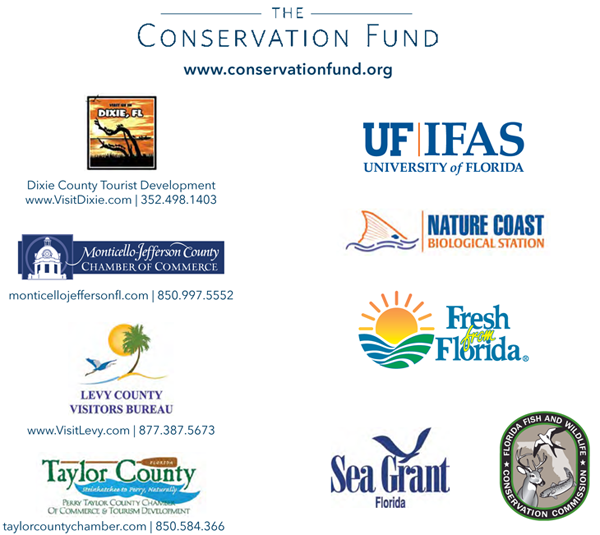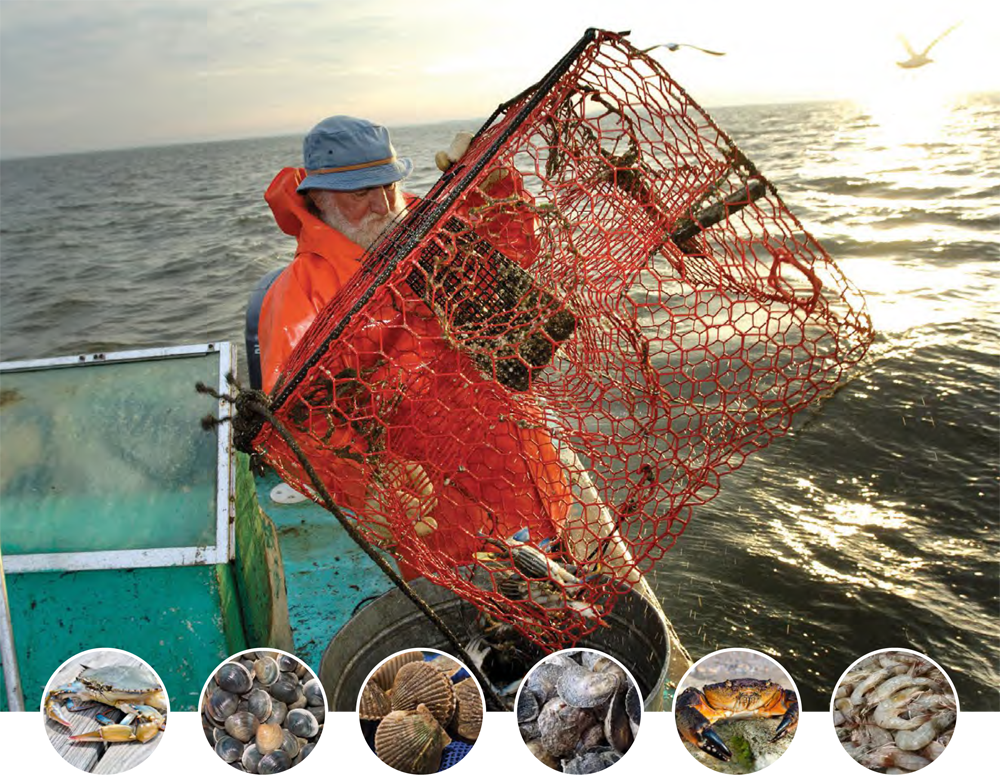
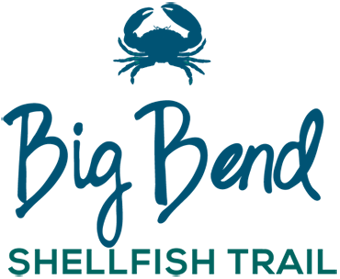
WORKING WATERFRONT COMMUNITIES
DIXIE, LEVY, JEFFERSON & TAYLOR COUNTIES – FLORIDA
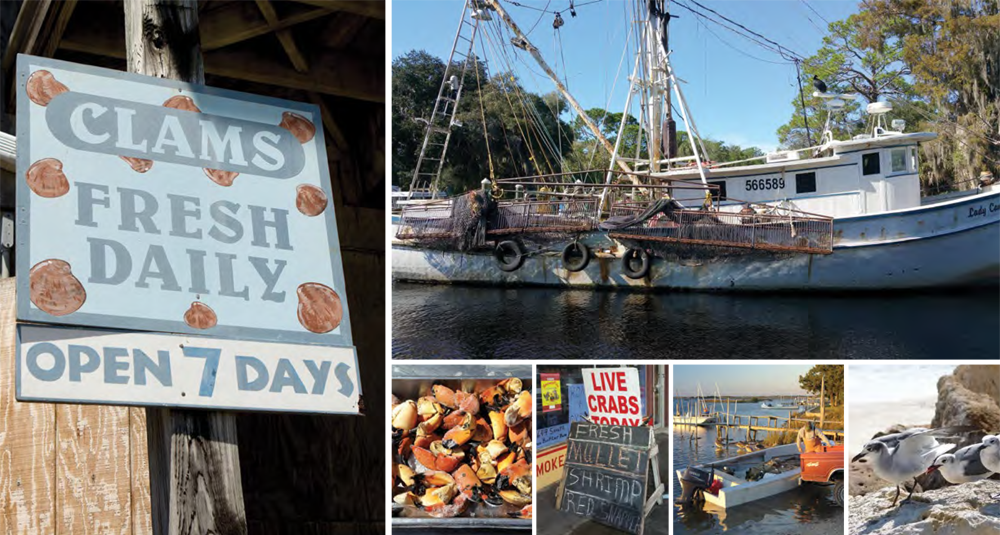
Big Bend Working Waterfronts
The Big Bend has a long history of natural resource dependence that dates to prehistory. Large Indian mounds scattered among the islands testify to the early inhabitants’ reliance upon shellfish for their sustenance. The waters surrounding the area’s coastal communities have historically been tied to their economic survival. Oysters, crabs, shrimp and fish have all crossed docks from Steinhatchee to Yankeetown at one time or another in abundance. But since 1995, when a statewide gill net ban was imposed, harvesting of mullet and other marine fish, as well as a “way of life,” came to an end. Today, clam aquaculture has replaced gill net fishing as the mainstay for many watermen. They still pursue mullet, especially during roe season, but now with a cast net to land this well-known southern delight. Far more common today are boats commonly called “bird dogs” converted to work the clam farms.
As you stroll the neighborhoods of these coastal towns, a common site will be stacked crab traps, wooden or plastic for stone crab and wire for blue crab. And you will occasionally discover clam bags laid across driveways. It is the easiest way to crush the fouling organisms that attach themselves over time to the bags. Although not harvested in the abundance of the past, the Big Bend remains a haven for fresh seafood. Succulent clams, freshly shucked oysters, soft shell crab or stone crab claws can be found on many menus and are fresh and delicious. With every bite, a taste of the sea and sense of history.
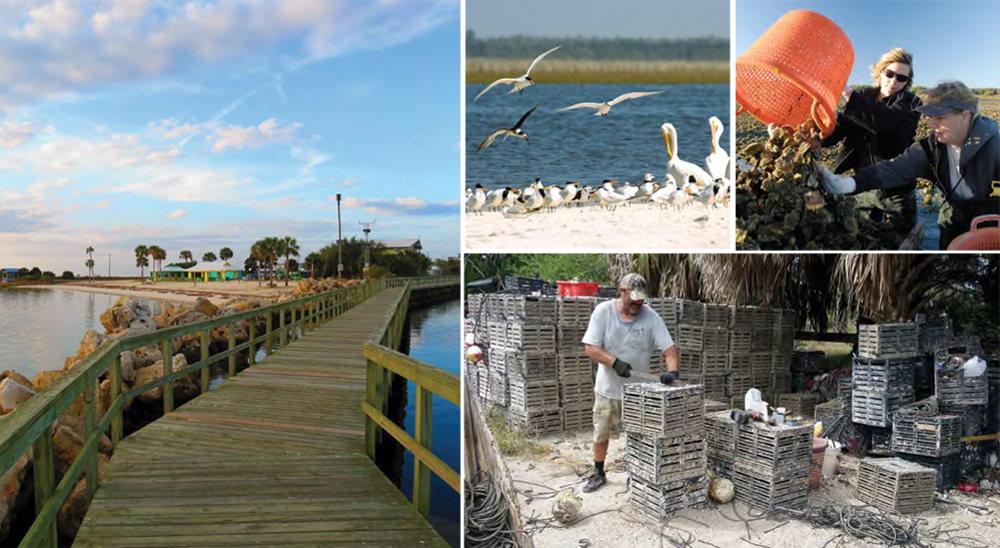
The Big Bend’s Environmental Qualities
The Big Bend coastal region is one of the largest and most productive areas for marine shellfish in the Gulf of Mexico. The region supports the second largest continuous area of seagrasses in the eastern Gulf, making it one of the most pristine places in Florida. The shoreline is predominately salt marsh and tidal creeks with only a few beaches, protected by a myriad of oyster bars and rocky islands. These habitats provide essential nearshore nurseries for many commercially and recreationally important species during their juvenile stages. The coastal waters are surrounded by a mix of federal and state owned uplands, as well as conservation areas and easements, providing a significant buffer to encroaching development while protecting shellfish and other marine resources from adverse land-use practices. This contributes to the uniqueness of the region, warranting its nickname “The Nature Coast.”
Things YOU can do to help promote Clean Coastal Waters:
Molluscan shellfish are filter feeders, taking in large quantities of water during feeding. Since these shellfish resemble the coastal waters in which they grow, harvesting can only take place in the cleanest of waters. Oysters, clams and mussels are often eaten raw or partially cooked, and the entire animal, excluding the shell, is consumed. Since only the muscle meat of Bay Scallops is consumed, they can be harvested outside of state shellfish harvesting areas. In Florida, national regulatory standards are followed by the Florida Department of Agriculture and Consumer Services (FDACS). This agency is responsible for monitoring, classifying and managing the waters to ensure shellfish harvested are safe and wholesome. There are five designated shellfish harvesting areas (SHAs) in the Big Bend region; each operates under a management plan based on either rainfall or river levels as freshwater drainage from land can introduce contaminants into adjacent coastal waters. Under these plans, FDACS can temporarily close an area for harvest before the shellfish become unsafe to consume.
To locate maps of each SHA and find out whether an area is open or closed to recreational or commercial harvest, visit the FDACS Division of Aquaculture’s website:
www.FreshfromFlorida.com/Divisions-Offices/Aquaculture
or contact their local office in Cedar Key at 352.543.5181
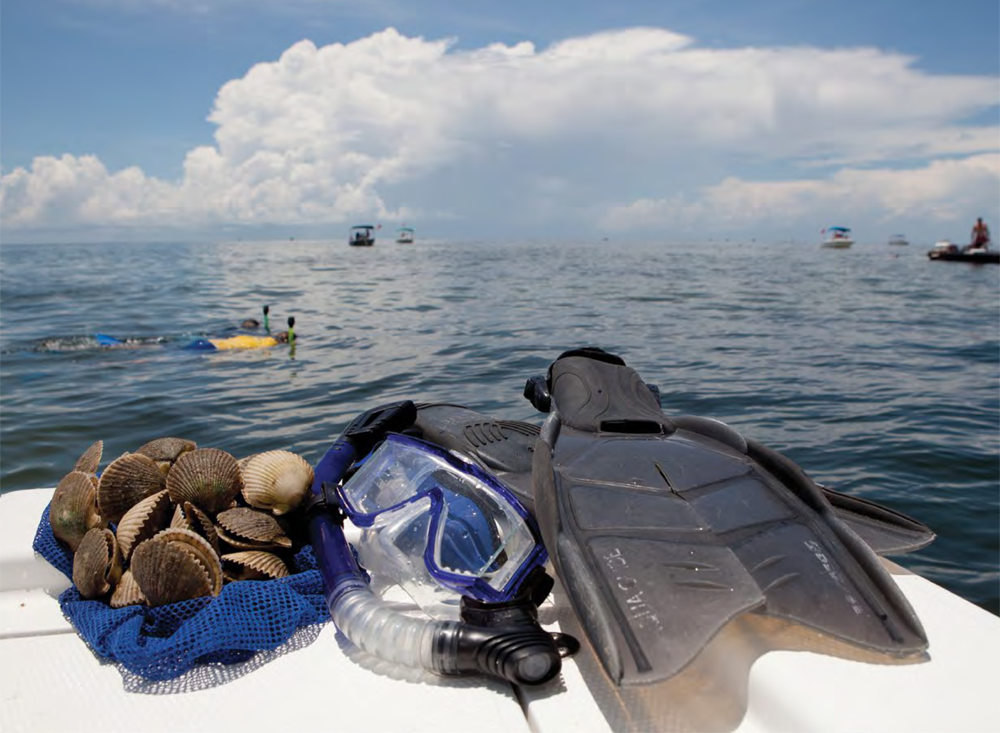
Shellfish farming is a relatively new industry in Florida. During the 1990s a transition to clam farming as an alternative employment opportunity for former fishermen was facilitated through job retraining programs. Today, about 150 growers harvest 100-125 million hard clams annually on 800 acres of submerged land leases located off the coasts of Levy and Dixie Counties. It is estimated that Cedar Key produces 80% or more of the state’s crop with a gross revenue impact of $35 million to the region’s economy. Diversification of crops is ongoing as growers are also culturing oysters and sunray venus clams.
FWC SEN. GEORGE KIRKPATRICK MARINE LAB
Leslie Sturmer, University of Florida-IFAS Shellfish Aquaculture Extension Program
11350 SW 153rd Ct, Cedar Key, 32625 • 352.543.5057 • LNST@ufl.edu
NATURE COAST BIOLOGICAL STATION
552 1st St, Cedar Key, 32625 • 352.222.8585
For tours of clam farms and shore-based businesses:
CAPTAIN BOBBY WITT • CLAM FARM TOUR
Cedar Key, 32625 • 352.212.2555 (call to schedule boat trips)
SOUTHERN CROSS SEA FARMS 12170 SR 24, Cedar Key, 32625 • 352.543.5980
www.clambiz.com • southerncrossclams@gmail.com
Free tours every Friday at 1:00 pm from Nov–May, call for group bookings.
Also visit these informative websites:
• Online Resource Guide for Florida Shellfish Aquaculture
• Florida Department of Agriculture and Consumer Services
• Florida Clams
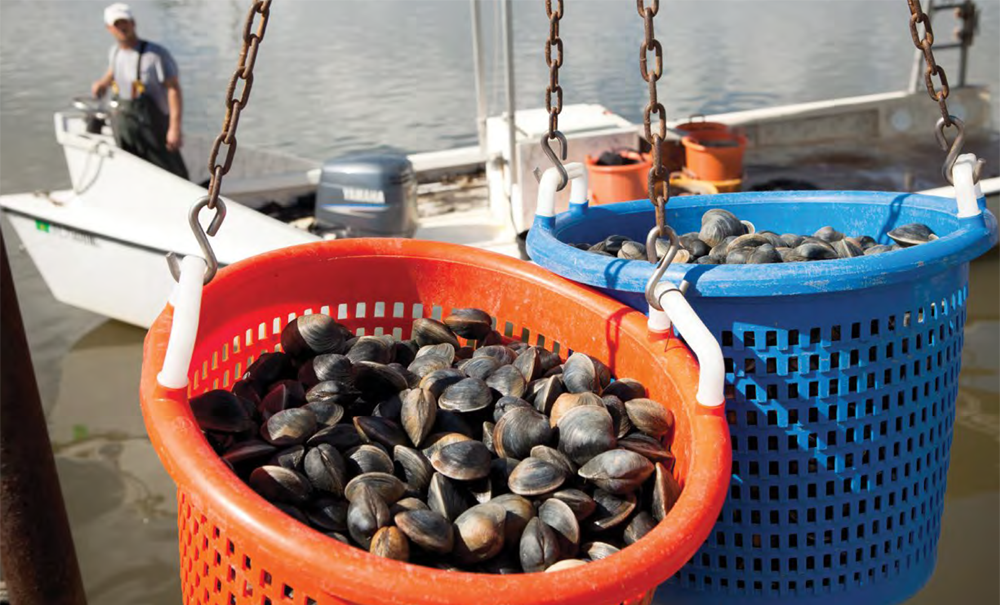
Species found in the Big Bend
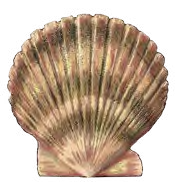
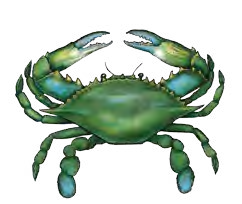
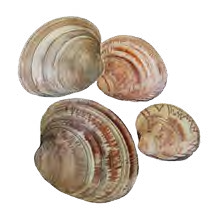
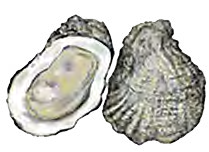
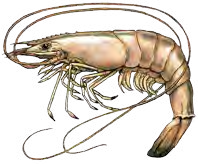
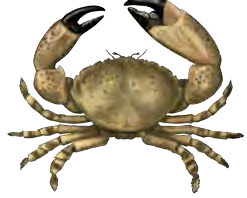
Rules pertaining to both commercial and recreational harvest of shellfish in the Big Bend
include limits on size, bag (amount) and catch, as well as gear restrictions.
For most current regulations, visit Florida Fish and Wildlife Conservation Commission:
www.myfwc.com/fishing/saltwater/recreational
For information on buying, handling and cooking shellfish,
visit Florida Department of Agriculture Consumer Services:
www.FreshfromFlorida.com/Division-Offices/Marketing-and-Development
Where to Buy, Eat and Locate Shellfish in the Big Bend

Photo Spots
Throughout this pristine coastal area there are many places to take great photos as you enjoy the Big Bend Shellfish Trail. Take advantage of the camera icon that highlights areas where you can view working waterfronts of shellfish farmers/fishermen, beautiful coastal landscapes and vistas. Many of the communities recycle clam and oyster shells for driveways, parking lots, sidewalks and for arts & crafts.
The uniqueness of these beautiful coastal villages and their cultural heritage is one that is ready to be discovered! The Big Bend Shellfish Trail is where you can learn more about Florida shellfish, aquaculture, sustainable environments that protect the waters, where to EAT and where to BUY (retail) Big Bend Shellfish. For the fishermen in your group, this area of Florida has amazing Big Reds, Trout, Tarpon and more. There are many cozy accommodations like bed and breakfasts, fish camps and hotel/motels available throughout the trail region.
It’s all waiting for you to explore! Plan your educational and travel adventure to this unique part of Florida. Contact one of the local chambers or tourist development offices listed in the box below for more information on how to visit the Big Bend Shellfish Trail or to have a map mailed to you.
Upload your photos to #floridashellfishtrail and share what you are learning as you visit communities along the trail.


Sponsors
Support for this project is provided by The Conservation Fund, a national organization that makes conservation work for America. By creating solutions that make environmental and economic sense, the Fund is redefining conservation to demonstrate its essential role in our future prosperity. Top-ranked for efficiency and effectiveness, the Fund has worked in all 50 states to protect more than 7.8 million acres of land since 1985, including 117,600 acres of working forestry, recreational lands, wildlife habitat, and cultural resources across Florida.
